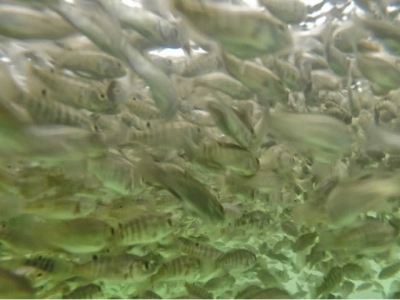Selective breeding can improve resistance to strep in tilapia

Selective breeding programmes have significant potential to make tilapia more resistant to Streptococcus agalactiae, according to newly published research.
Published in the latest issues of The Journal of Fish Diseases, under the title, “Selection response for Streptococcus agalactiae resistance in Nile tilapia Oreochromis niloticus,” the researchers were evaluating the potential of a breeding programme to improve resistance to streptococcosis - one of the most common diseases in global tilapia production - in a commercial population of Nile tilapia in Thailand.
At 60 days post‐hatch, 30 fish from each family used (the base generation - G0) were injected intraperitoneally with a Streptococcosis agalactiae solution and evaluated for 14 days. Disease resistance in this base generation was recorded as the number of days from challenge until death (DD) and as a binary (BIN) trait (dead/alive) on day 14. Fish from the 18 most resistant families were then selected to produce the first generation (G1).
Heritability estimates for G0 were 0.22 using the Cox model, while the researchers noted that selection response indicated that the risk of death decreased to 54 percent, survival time increased to 3.4 days and survival rate increased to 21 percent, suggesting that breeding tilapia that are more resistant to S. agalactiae is possible.
Related news
 Why aquaculture is becoming big on blockchain
Why aquaculture is becoming big on blockchain The value of adopting blockchain technology in the aquaculture sector was the subject of a special seminar at Aqua Nor this week.
 Can Vietnamese shrimp exports hit US$4.2 billion?
Can Vietnamese shrimp exports hit US$4.2 billion? Is it possible that Vietnam’s shrimp export value can hit US$4.2 billion USD while the export volume is experiencing a downward trend?
 Trial to test probiotics in oyster farming
Trial to test probiotics in oyster farming Researchers developing dried probiotic supplement that can be fed to oyster larvae to improve health and vitality.